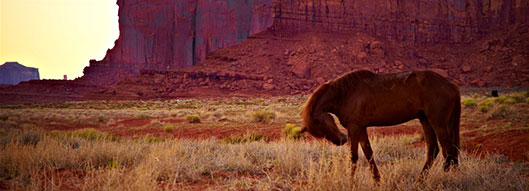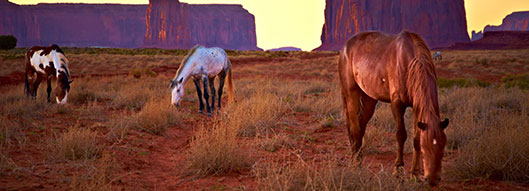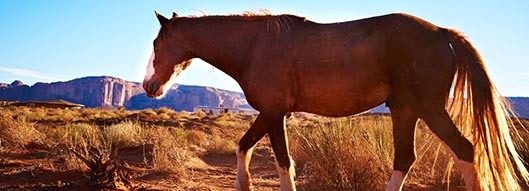MANAGE HORSE HOOF CRACKS AND INFERIOR FEET
The hoof wall is a non-living tissue. The hoof wall material near the ground, that is being trimmed today, was laid down ten to twelve months ago. The quality of the hoof horn tissue will never be any better than it was when it was laid down and is reflective of genetics, nutrition, body health and environmental conditions at the time. As the hoof wall grows down, the quality of the hoof horn will tend to deteriorate over time and be in its poorest condition as it reaches the ground. Environmental conditions and hoof care practices effect the degree and rate of deterioration that occurs. A thick dense wall that has been kept in moderately soft and dry conditions and trimmed regularly to encourage a shared load will still be in good condition at the ground level and can easily support the weight of the horse. An inferior hoof wall, subjected to extreme wet and dry conditions and maintained so the majority of the load is on the wall, will probably break down in the form of splits, flares, cracks and crumbles at the ground level or higher.
The origination and progression of hoof wall cracks is revealed when the hoof wall is unloaded. Thin walled hooves tend to flare and split at the ground level. Wet then dry conditions cause small surface cracks to develop. As the horse travels, the hoof wall is caused to flex with each stride. A thin wall will flex more than does a thick wall. Any splits or surface cracks create stress concentrations which tend to magnify the movement in those areas. The cracks and splits progress vertically through the length and depth of the wall. With other cases, especially on thin walled hooves that have a low, wide angled bell shape, cracks are often first visible near the hair line and then travel vertically downward. The flexing of the wall actually causes the inner surface of the wall to be in tension. It is then possible for cracks to initiate and progress from the inside out. In either case, to prevent cracks from progressing, the flexing of the wall must be stopped. Support shoes with clips place most of the load on the wall and thus intensify the flexing of the hoof wall. Crack repair patches can only reinforce a local area. Only by reducing or eliminating the weight bearing load on the hoof wall can the flexing throughout the entire wall be stopped.
To prevent major cracks from developing, reduce the load on the wall when surface cracks, splits and flares are small. Maintain a shared load situation between the hoof wall and the sole. Manage conditions to maximize the quality of new hoof wall growth. Maintain the level of load share that allows for improvement of hoof quality and enables the horse to continue performance.
To fix deep cracks in the hoof wall it is necessary to remove the load on the wall. Manage conditions to maximize the quality of new hoof wall growth. Maintain the reduced load on the walls until the crack is gone with the growth of a new length of hoof wall.
STRUCTURALLY INFERIOR FEET
Structurally inferior feet may exhibit slow growth and develop minor ailments such as flares, surface cracks, dished profile, extended whiteline and crushed heels. This inferior hoof wall may be caused by genetic reasons or may have permanent scars from previous injury. The injury may be from some physical accident or the result of a previous founder condition. These factors limit the level of rejuvenation or condition that is possible for these hooves to achieve. The wall and laminae of these hooves may never be able to support a normal load unassisted. However, the hoof condition and horse's performance can be maximized by maintaining a shared load situation on an on-going basis. The horse's environment, ground conditions, nutrition, and lifestyle must also be carefully managed.
EVERY DAY FARRIER CARE
The average farrier may not have many horses in their clientele with serious hoof wall cracks and most farriers may not experience many laminitis cases during their career. Armed with this knowledge of the principles of load sharing, the farrier will have an increased level of confidence to deal with major cases when they do occur.
We farriers are daily called upon to work on feet that are less than perfect. If that was not the case, there would be no need for farriers. If the goals of hoof care are to improve the hoof toward a healthy normal condition, the farrier has the obligation to apply the principles of load sharing with each trimming on every horse.
It is not always possible, but whenever practical, the farrier should tend to provide the horse with a shared load between the hoof wall and the sole. Leave the horse bare foot but if it must be shod then use thinner shoes. Provide soft turf. Allow the horse free choice exercise. Trim often so the walls do not get long. Trim the bars, frog and sole callous sparingly to allow them to extend level with the ground surface of the wall. Dress away the flared hoof wall. Recognize symptoms of overload and provide relief to the overload early to minimize tissue damage. Provide positive sole support. Cushion and distribute the load on the sole.
The owner may not realize that the farrier is doing anything special nor that any hoof ailments were prevented. But they will notice that the hoof quality is excellent, the horse is sound, and the cost of hoof care is minimal. On cases where founder or cracks are eliminated, the owner will be thankful that the horse was saved and glad to have it back into full performance.
If you unload it, it will heal.





